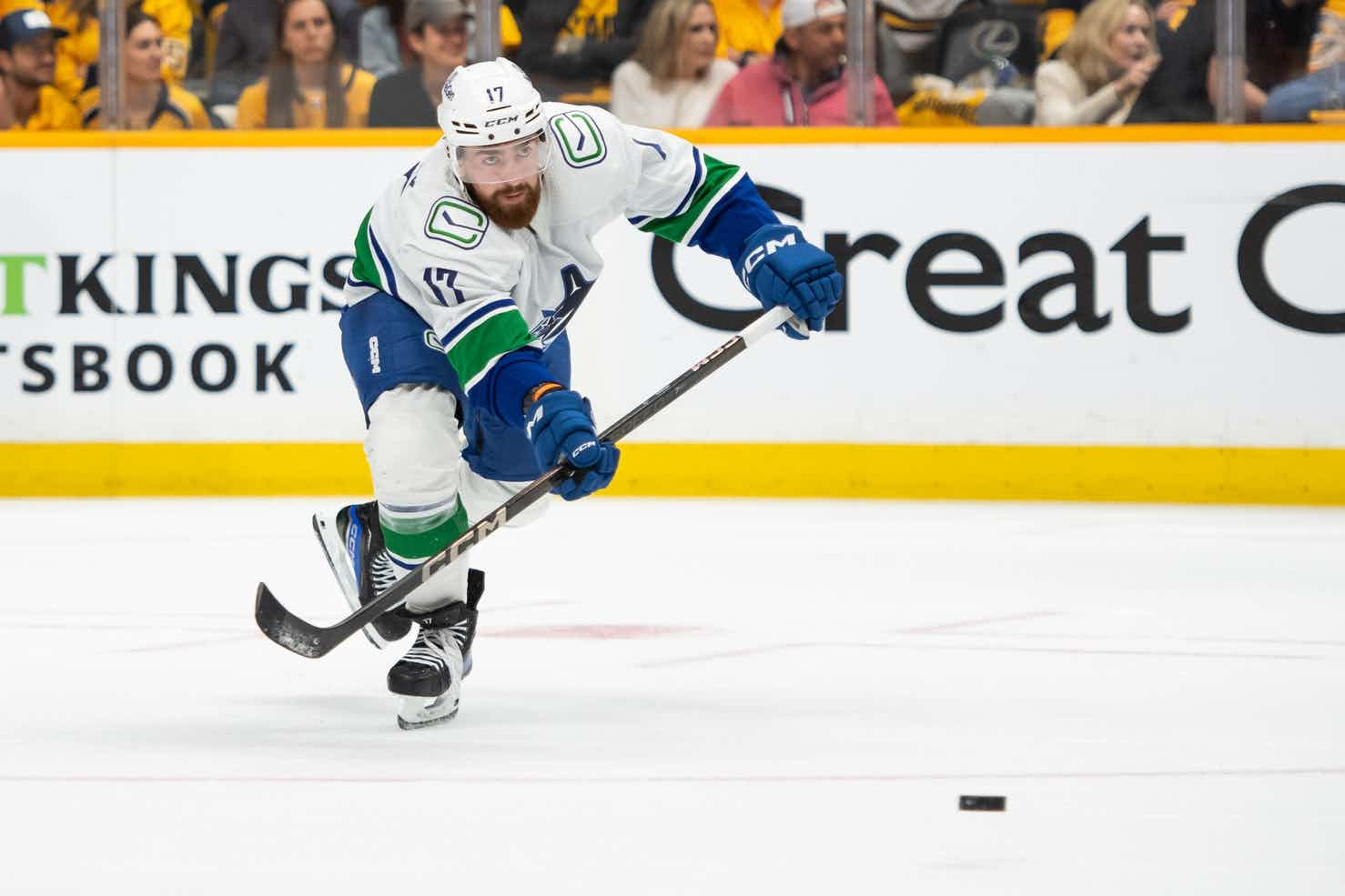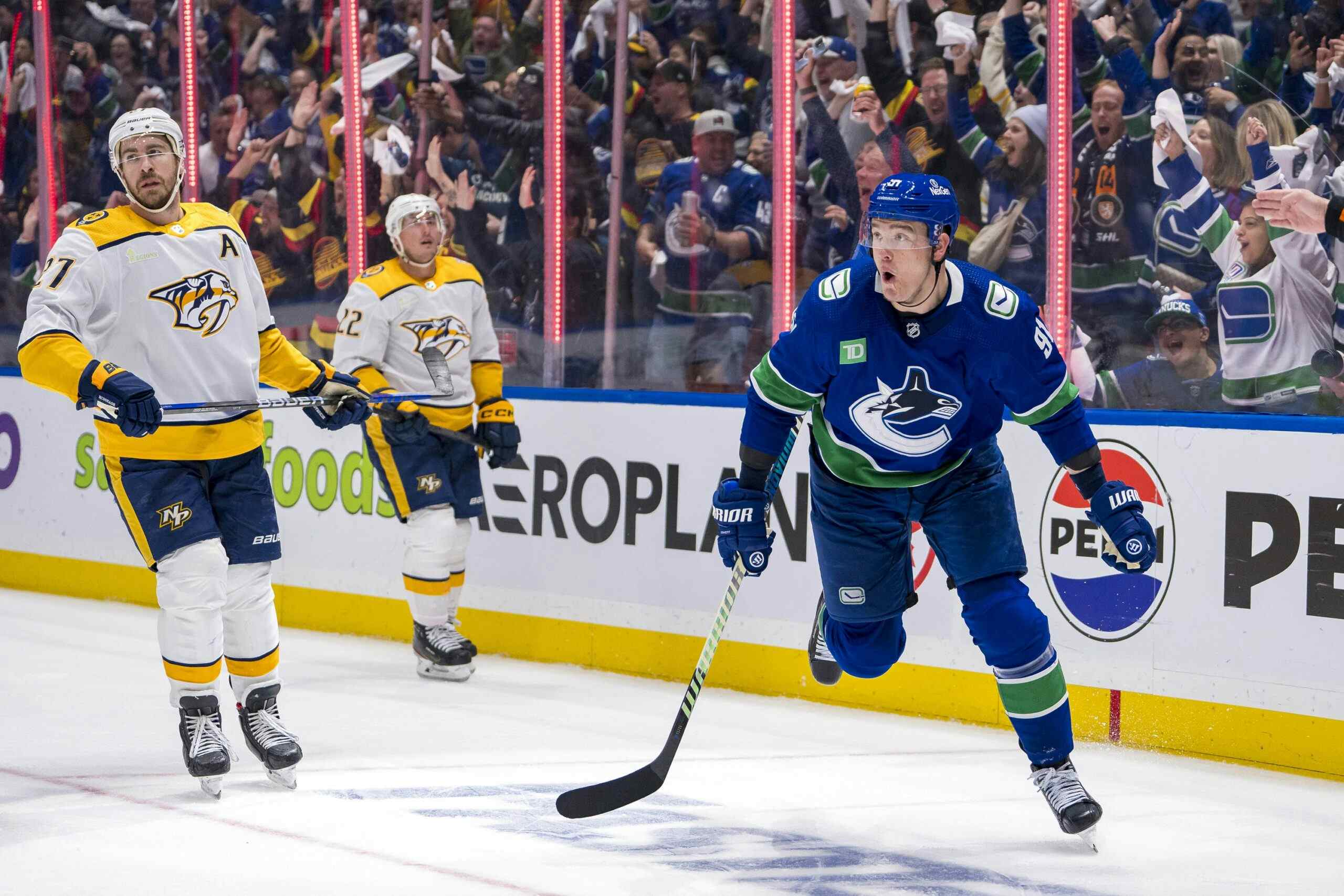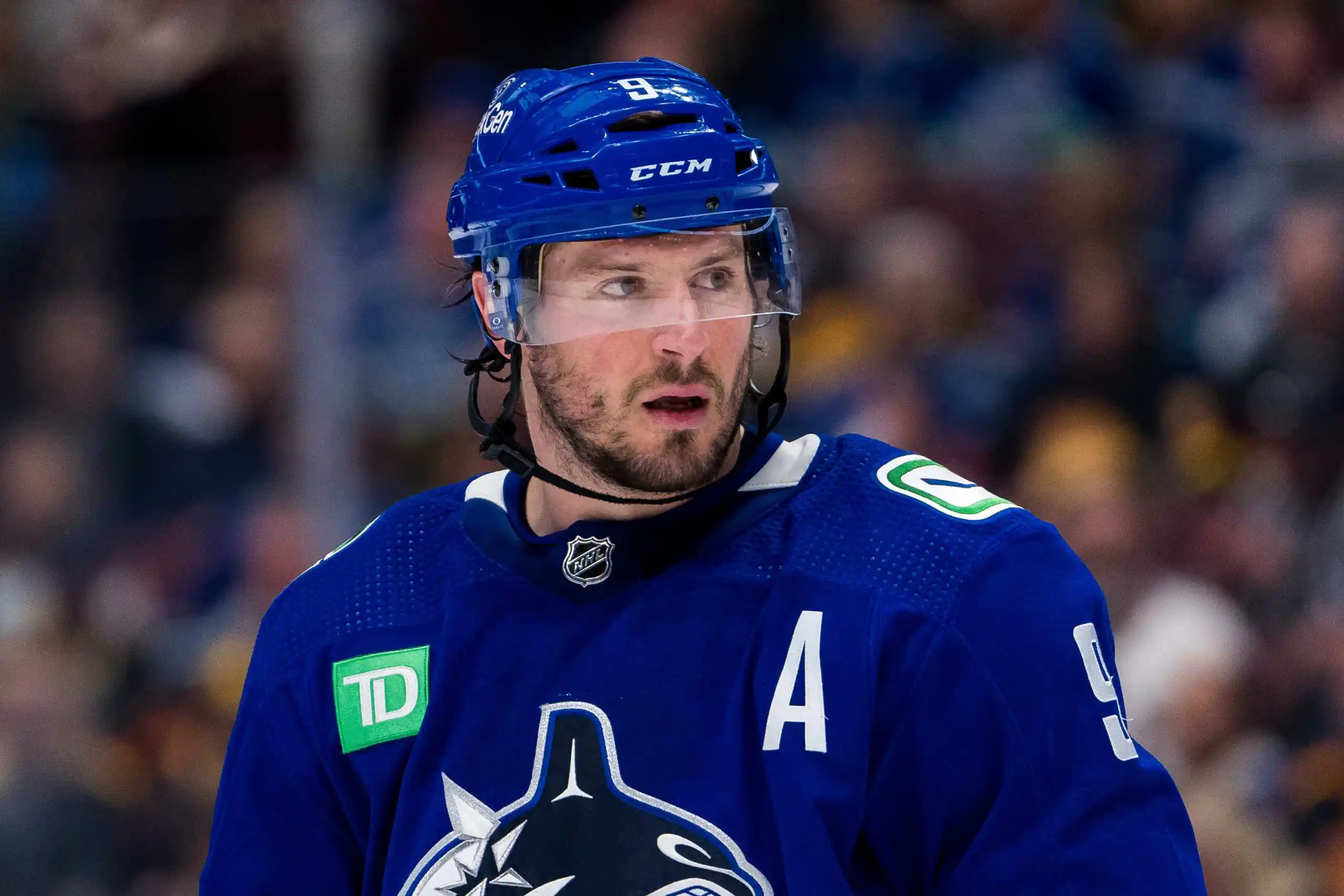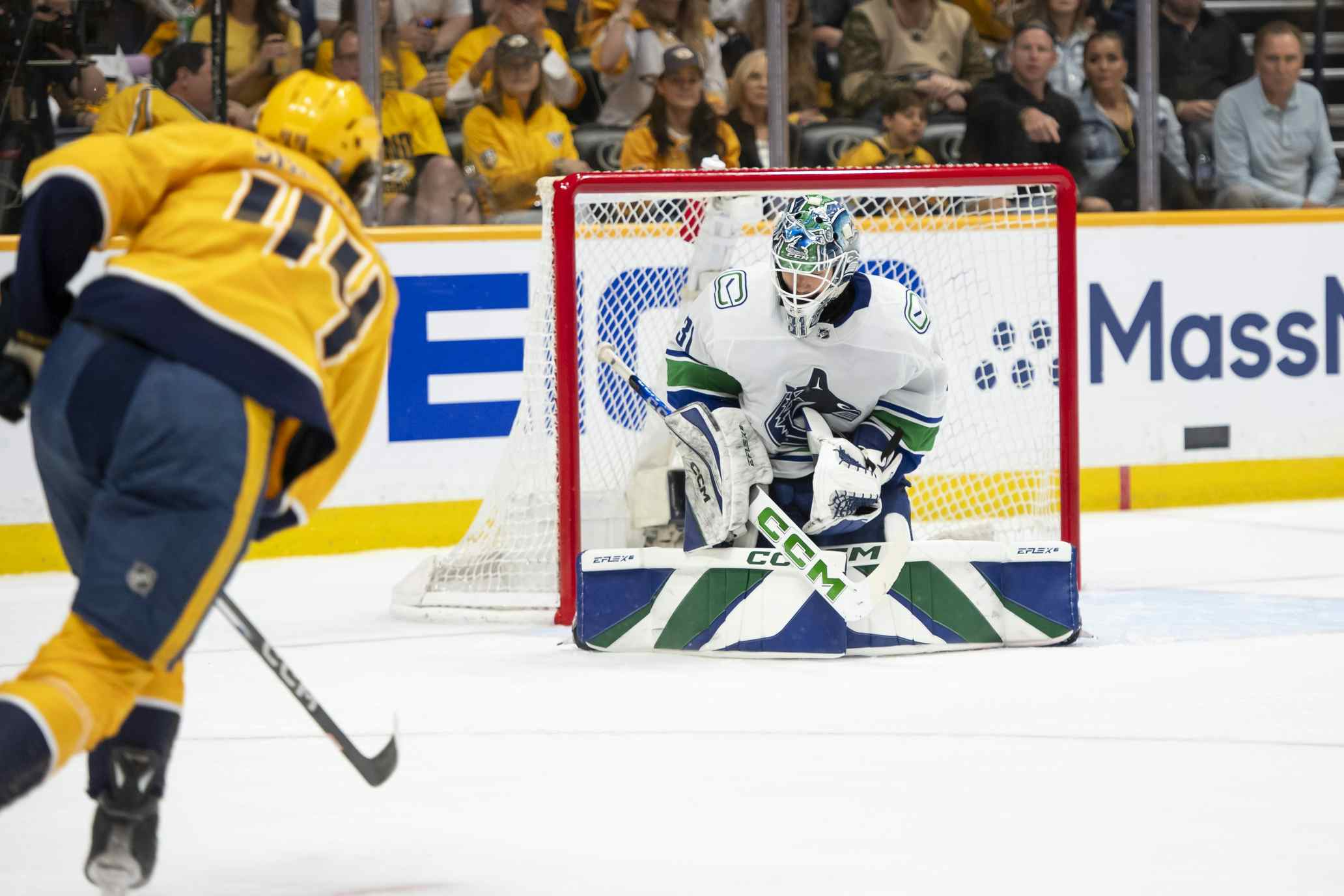Jason Garrison’s fifth year: Expecting goals
By Cam Charron
11 years ago
About a minute after my post on Province Sports about Jason Garrison went live, I got a barrage of texts from resident blog chief Thomas Drance:
“You kidding me?”
“5 Garrison goals”
“You expect JG to score 5 goals”
“Wrote it today”
“Least well thought out thing you’ve written in a while!”
Obviously I pride myself in thinking out at least half the things I write, but I calmly explained by reasoning. For one, I never stated that Garrison would score “5 goals”. I wrote “upwards of five”. The second thing to note is that I think five goals is a lot of goals for a defenceman.
Jason Garrison has had an odd start to his NHL career. In two full years of playing, he’s been a #fancystats darling and has scored a bunch of goals. From his Hockey-Reference page:
| Season | Age | Tm | Lg | GP | G | A | PTS | GC | +/- | PIM | EV | PP | SH | GW | S | S% | TOI | ATOI |
|---|---|---|---|---|---|---|---|---|---|---|---|---|---|---|---|---|---|---|
| 2008-09 | 24 | FLA | NHL | 1 | 0 | 0 | 0 | 0 | 0 | 0 | 0 | 0 | 0 | 0 | 0 | 12 | 11:57 | |
| 2009-10 | 25 | FLA | NHL | 39 | 2 | 6 | 8 | 3 | 5 | 23 | 2 | 0 | 0 | 0 | 24 | 8.3 | 590 | 15:08 |
| 2010-11 | 26 | FLA | NHL | 73 | 5 | 13 | 18 | 6 | -2 | 26 | 5 | 0 | 0 | 3 | 116 | 4.3 | 1627 | 22:18 |
| 2011-12 | 27 | FLA | NHL | 77 | 16 | 17 | 33 | 13 | 6 | 32 | 7 | 9 | 0 | 3 | 168 | 9.5 | 1825 | 23:42 |
| Career | NHL | 190 | 23 | 36 | 59 | 22 | 9 | 81 | 14 | 9 | 0 | 6 | 308 | 7.5 | 4054 | 21:20 |
That 7.5% shooting percentage is an awfully high number for a defenceman. While I’m usually okay with looking at career average shooting percentages for certain players, fact is that 308 shots is not enough shots for us to determine whether a guy is a terrific shooter or not.
So I ran a test to figure out what would happen for players with high shooting percentages. Using HR.com, I looked for defencemen who had taken between 258 and 258 shots in their first four NHL seasons, and took the best ten shooters by shooting percentage. Tie-breakers went to the player with the most goals. I then manually checked to see how they did in Year #5. Here is the list of players:
-Greg Hawgood
-Richard Smehlik
-Derian Hatcher
-Alexei Kasatonov
-Steve Smith
-Larry Sacharuk
-Garry Galley
-Brent Burns
-Vladimir Konstantinov
-Tomas Kaberle
-Richard Smehlik
-Derian Hatcher
-Alexei Kasatonov
-Steve Smith
-Larry Sacharuk
-Garry Galley
-Brent Burns
-Vladimir Konstantinov
-Tomas Kaberle
I’ve heard of a few of these names. The most famous is Greg Hawgood, whose name and number hangs famously in the rafters of the Interior Savings Centre in Kamloops. Then there are a bunch of scrubs.
Anyway, the combined shooting percentage of these players in their first four years was 8.7%. More than Jason Garrison, for sure, but we’re looking to see if shooter talent for defencemen is predictive after the first four years.
In Year 5, Kasatonov scored 4 times on 87 shots. Smehlik scored 3 times on 90 shots. Burns scored 8 on 147 and Galley had 8 on 145. Overall, the players combined for a shooting percentage of 6.4% and averaged just 6.1 goals on the season.
Actually, Brent Burns is a good offensive comparable:
| Goals | Shots | Sh% | |
|---|---|---|---|
| Jason Garrison | 23 | 308 | 7.47% |
| Brent Burns | 22 | 266 | 8.27% |
Since that initial outburst, Burns is chugging along at a respectable 6.3% in his last four seasons. That’s still above average for a defenceman, but what you’d expect when you factor in shooter regression. Some shooting involves talent, but there’s some luck involved, whether you get to play against bad goaltending, or a lot of powerplay time, or what have you, there are certain factors that are involved.
I also tallied up a group of “average” shooters and a group of “bad” shooters:
| Sh% First 4 | Sh% 5th Year | Avg. G 5th Year | |
|---|---|---|---|
| Top | 8.7% | 6.4% | 6.1 |
| Average | 5.1% | 4.5% | 3.3 |
| Bottom | 2.5% | 3.1% | 3.1 |
| Garrison | 7.5% | ? | ? |
All three groups regressed towards the mean, which I’m guessing is about 4.5%. Since this is looking at players in different eras, I don’t know exactly what the average defenceman shooting percentage is.
The point is, a high shooting percentage in four seasons doesn’t guarantee a fifth season. 6.1 goals is a good number to expect from Garrison next season, and anything else would be a bonus. That’s taking everything into account. Not just regression, but injuries and a decrease in ice-time.
I’m erring on the side of tempered offensive expectations of Mr. Garrison. I think his defensive game is what makes him a terrific buy at $4.6M per.
Recent articles from Cam Charron





